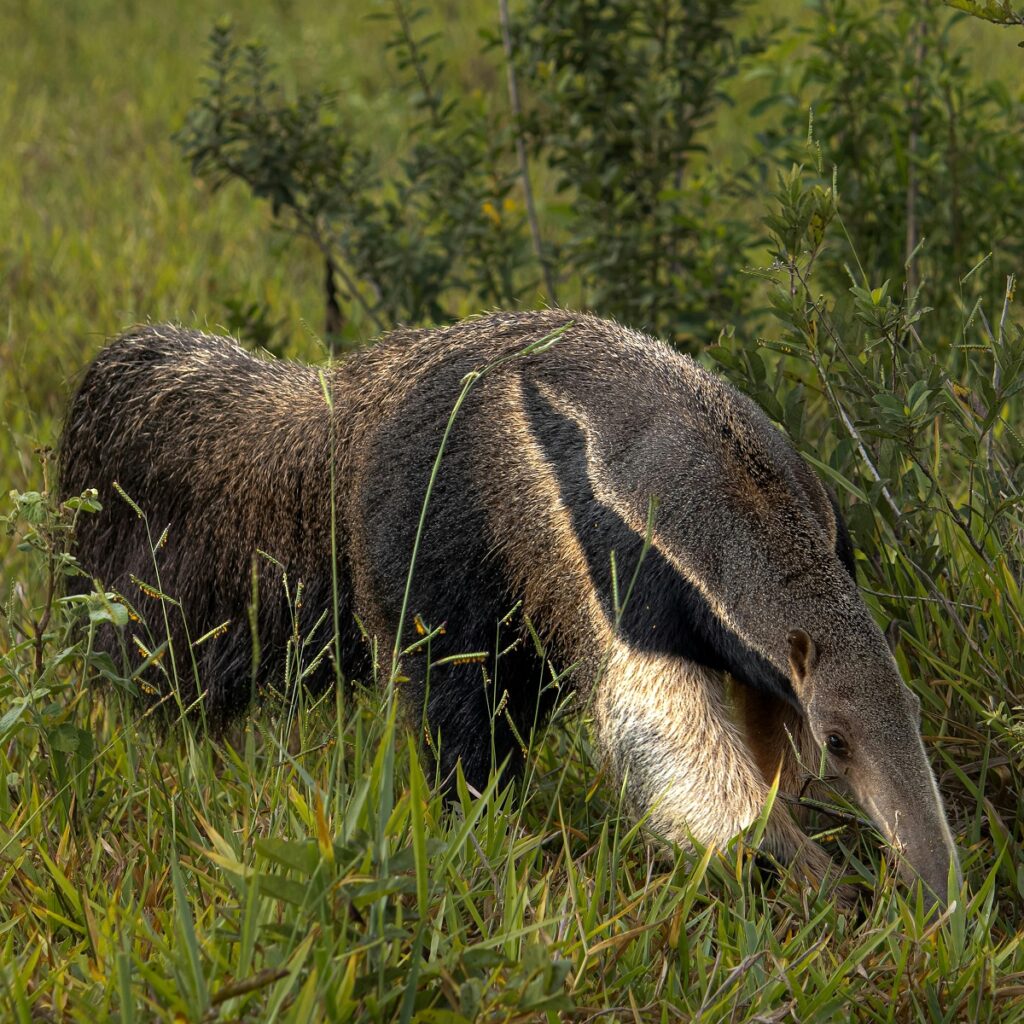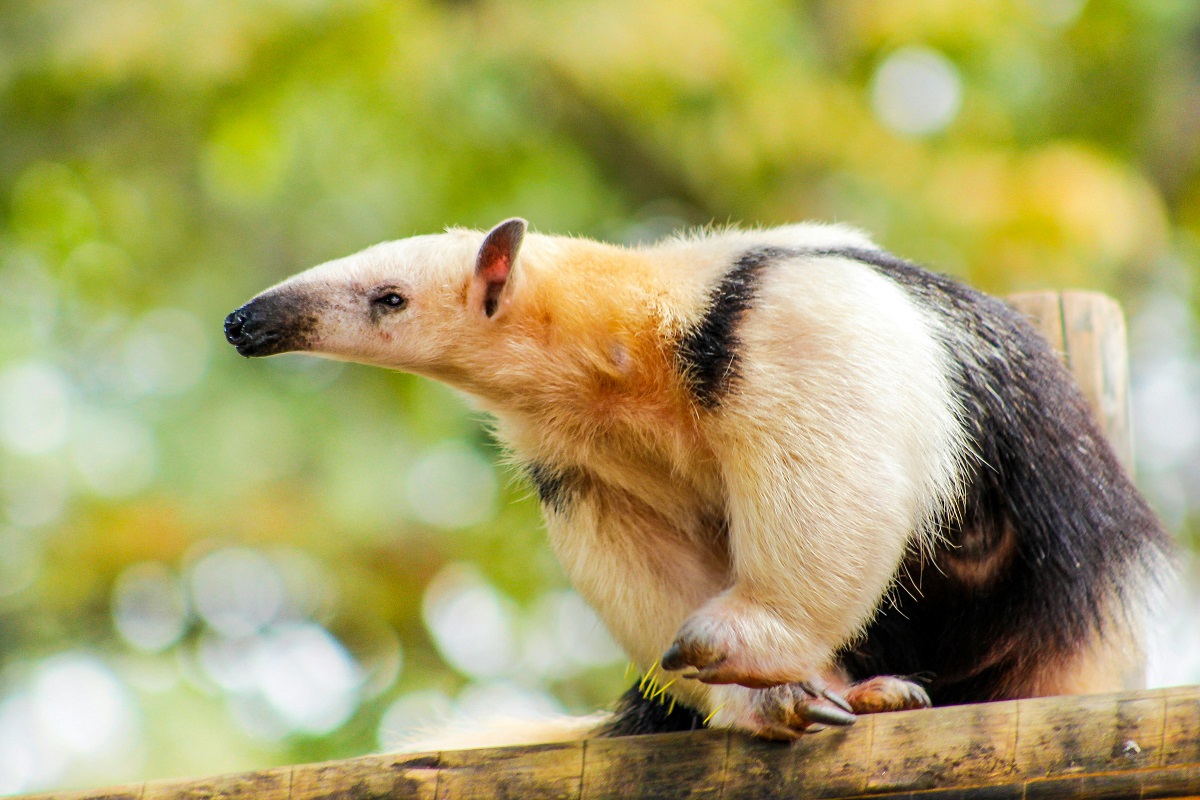The anteater is one of the most unique animals in the world. It is known for its long snout, sticky tongue, and love for eating ants and termites. Anteaters are fascinating creatures with special adaptations that help them survive in the wild. They are found in Central and South America. Let’s explore the world of the anteater and learn about its life, habits, and importance in nature.
What is an Anteater?
| Category | Details |
|---|---|
| Common Name | Anteater |
| Scientific Name | Order: Pilosa (includes 4 species) |
| Class | Mammalia (mammals) |
| Family | Myrmecophagidae (giant anteater and tamanduas); Cyclopedidae (silky anteater) |
| Species | 1. Giant Anteater (Myrmecophaga tridactyla) |
| 2. Silky Anteater (Cyclopes didactylus) | |
| 3. Northern Tamandua (Tamandua mexicana) | |
| 4. Southern Tamandua (Tamandua tetradactyla) | |
| Habitat | Rainforests, grasslands, savannas, and swamps (Central and South America) |
| Distribution | Central and South America |
| Size | Giant Anteater: Up to 7 feet (including tail); Silky Anteater: 6–8 inches; Tamanduas: 3–4 feet |
| Weight | Giant Anteater: 60–100 lbs; Silky Anteater: 6–12 oz; Tamanduas: 7–18 lbs |
| Lifespan | Wild: 10–15 years; Captivity: Up to 25 years |
| Diet | Insectivorous (ants, termites, beetles, larvae) |
| Unique Features | Long snout, sticky tongue (up to 2 feet), strong claws, no teeth |
| Reproduction | Solitary; gives birth to 1 pup per year; pup rides on mother’s back |
| Conservation Status | Giant Anteater: Vulnerable; Silky Anteater: Least Concern; Tamanduas: Least Concern |
| Predators | Jaguars, pumas, and large birds of prey |
| Adaptations | Thick skin, low body temperature, slow metabolism, strong claws for digging |
An anteater is a mammal in the order Pilosa. There are four species of anteaters: the giant anteater, the silky anteater, the northern tamandua, and the southern tamandua. Each species has its own unique features, but all anteaters share some common traits. They have long snouts, sticky tongues, and strong claws.
Anteaters are part of the superorder Xenarthra. This group also includes sloths and armadillos. Xenarthrans are known for their unique joints and slow movements. Anteaters, however, are more active than their relatives. They spend most of their time searching for food.
The Giant Anteater

The giant anteater is the largest of the four species. It can grow up to 7 feet long, including its tail. The giant anteater has a long, bushy tail that helps it balance. Its fur is gray or brown with black and white stripes on its shoulders. This pattern helps it blend into its environment.
The giant anteater has a long, tube-like snout. Its mouth is very small, and it has no teeth. Instead, it uses its long, sticky tongue—up to 2 feet long — to catch ants and termites. The tongue is covered in tiny, backward-facing spines and sticky saliva, which helps the anteater grab insects quickly.
The giant anteater also has strong front claws. These claws are used to tear open ant nests and termite mounds. The claws are so long that the anteater walks on its knuckles to avoid damaging them.
The Silky Anteater
The silky anteater is the smallest of the four species. It is about the size of a squirrel. The silky anteater has soft, golden fur. This gives it a silky appearance, which is how it got its name.
The silky anteater lives in trees. It has a prehensile tail that helps it grip branches. Its claws are also adapted for climbing. The silky anteater is nocturnal, meaning it is active at night. It spends its days sleeping curled up in a ball.
The Tamanduas
The northern and southern tamanduas are medium-sized anteaters. They are about 3–4 feet long, including their tails. Tamanduas have short fur that is tan or brown. They also have black markings on their bodies.
Tamanduas are semi-arboreal, meaning they live both on the ground and in trees. They have prehensile tails that help them climb. Tamanduas are also good swimmers. They use their tails to steer in the water.
Habitat and Distribution
Anteaters are found in Central and South America. They live in a variety of habitats, including rainforests, grasslands, and savannas. The giant anteater prefers open areas like grasslands. The silky anteater lives in tropical rainforests. Tamanduas are found in forests and swamps.
Anteaters are solitary animals. They spend most of their time alone, searching for food. They have large home ranges. An anteater’s home range can be several square miles. This is because they need to find enough ants and termites to eat.
Diet and Feeding Habits
Anteaters are insectivores, meaning they eat insects. Their favorite foods are ants and termites. An anteater can eat up to 30,000 ants or termites in a single day. They use their strong claws to tear open ant nests and termite mounds. Then, they use their long, sticky tongues to lick up the insects.
Anteaters have a unique way of eating. They move quickly from one nest to another. They spend only a short time at each nest. This prevents the ants or termites from attacking them. An anteater’s tongue can move in and out of its mouth up to 160 times per minute.
Anteaters also eat other small insects, like beetles and larvae. But ants and termites make up most of their diet. They get all the nutrients they need from these insects.
Reproduction and Lifespan
Anteaters are solitary animals, except during mating season. Males and females come together to mate. After mating, they go their separate ways. The female is responsible for raising the young.
A female anteater gives birth to one baby at a time. The baby is called a pup. The pup clings to its mother’s back for several months. The mother carries the pup everywhere she goes. The pup starts eating solid food at about 2–3 months old. But it continues to nurse for up to 6 months.
Anteaters reach adulthood at about 2–3 years old. In the wild, anteaters can live up to 15 years. In captivity, they can live even longer.

